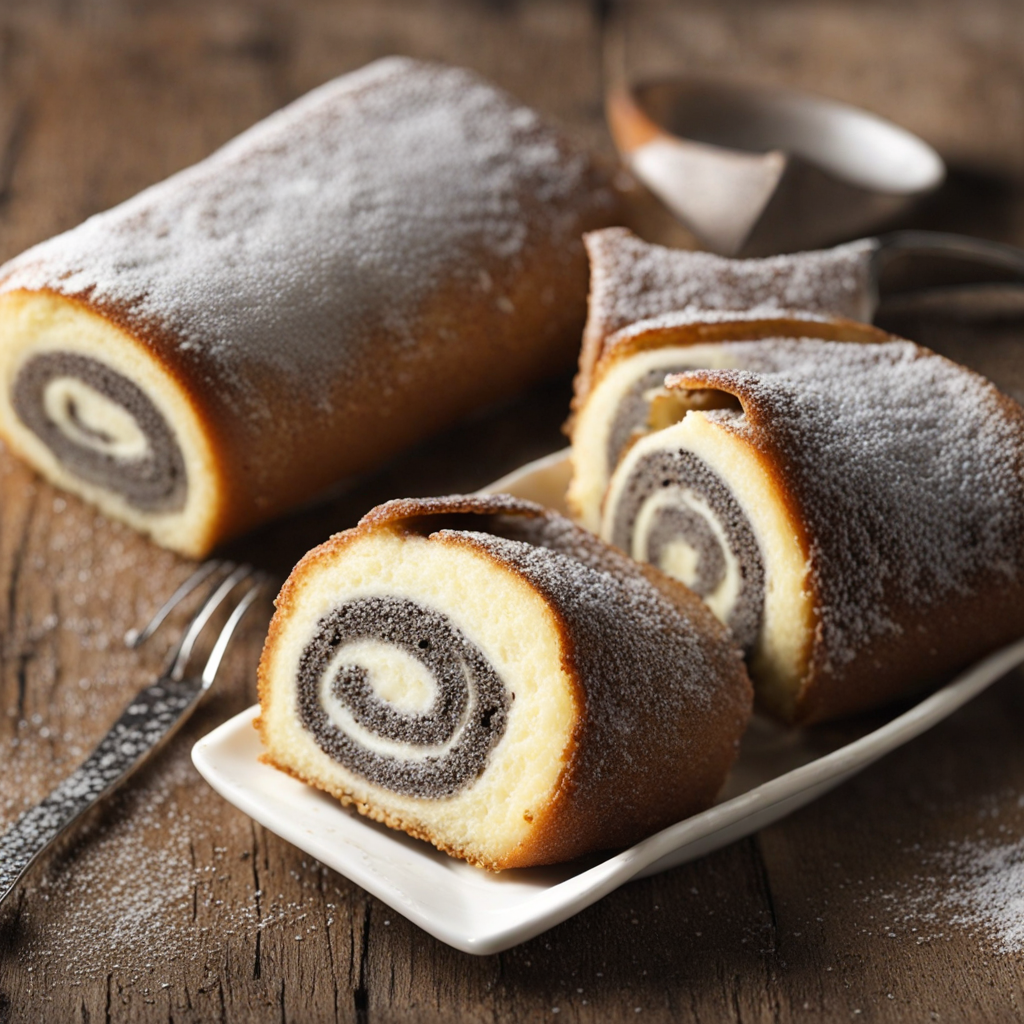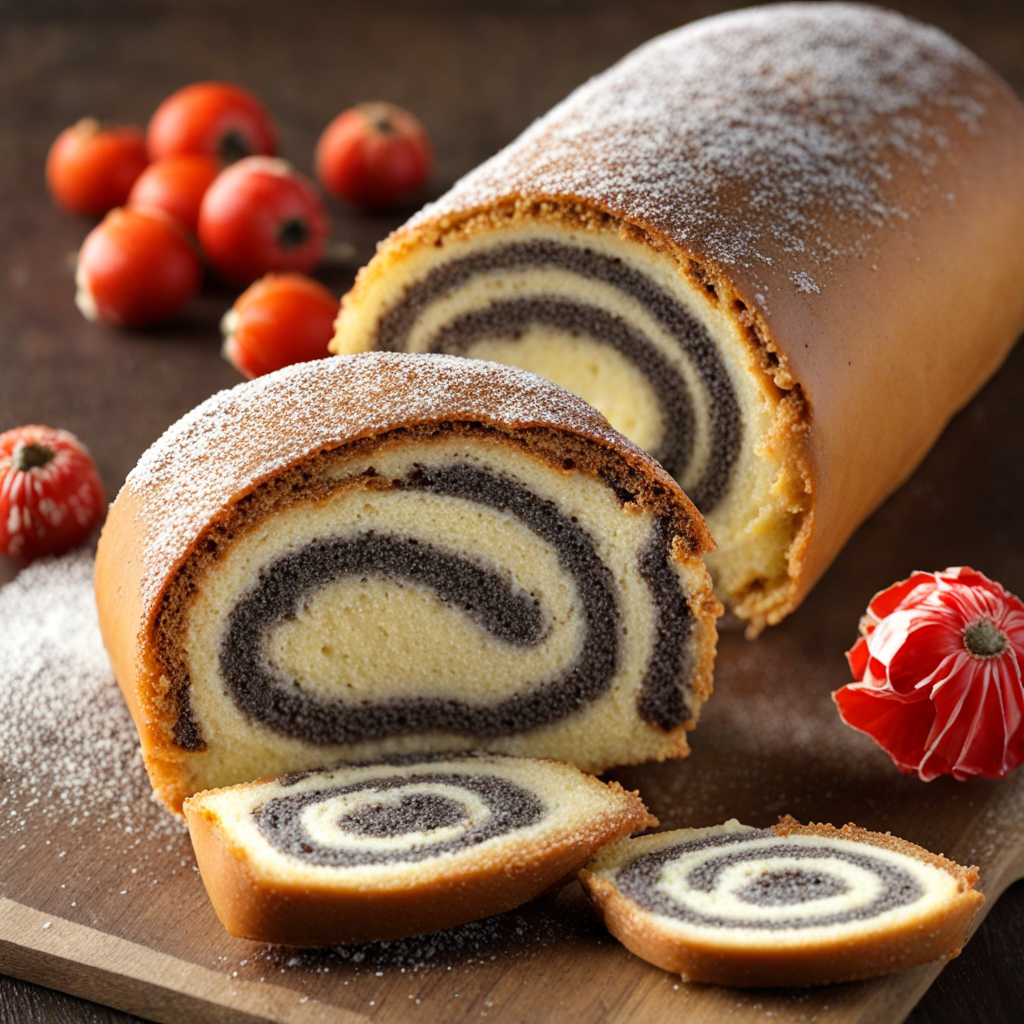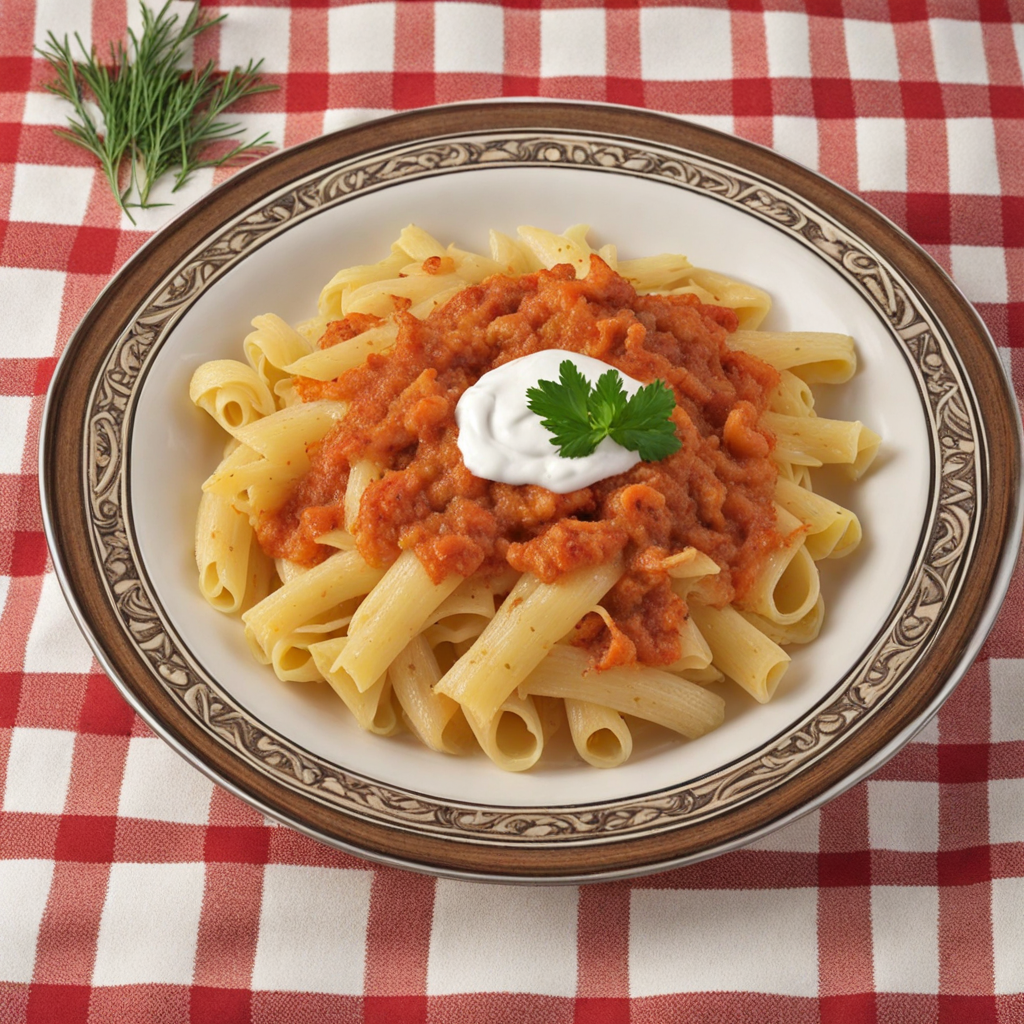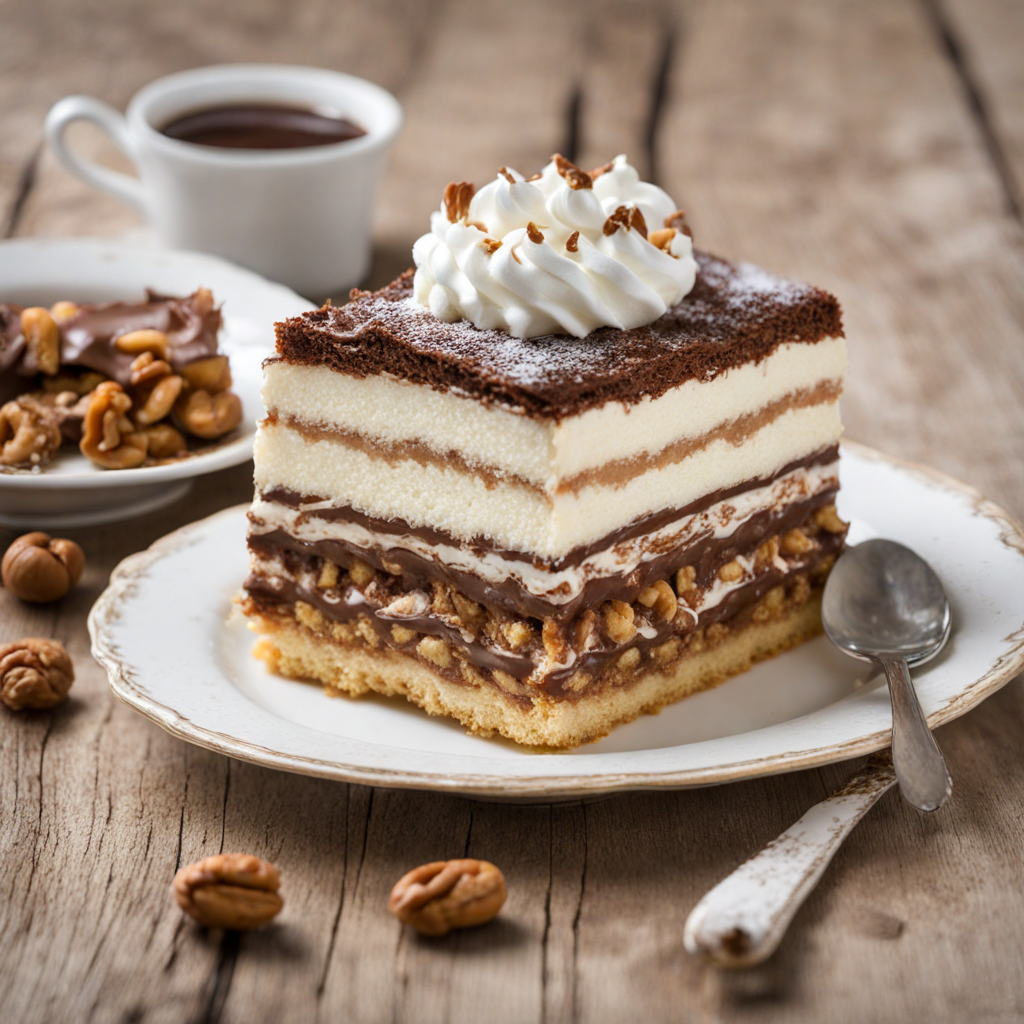Mákos Beigli
Mákos Beigli is a traditional Hungarian pastry that showcases the rich culinary heritage of Hungary through its unique flavors and textures. This delightful rolled pastry is made from a soft, yeast-leavened dough that is beautifully layered and rolled around a sweet, nutty poppy seed filling. The dough is typically enriched with butter, milk, and eggs, resulting in a tender crumb that contrasts perfectly with the dense and flavorful filling. As it bakes, the exterior develops a golden-brown crust that encases the fragrant filling, making it an irresistible treat for the senses. What sets Mákos Beigli apart is its sumptuous filling, which is crafted from finely ground poppy seeds mixed with sugar, honey, and sometimes a hint of lemon zest or vanilla for added depth of flavor. This combination creates a sweet, aromatic experience that evokes the essence of traditional Hungarian desserts. The filling is often combined with cocoa powder or chocolate, giving it a rich, indulgent taste that complements the earthy notes of the poppy seeds. Each bite reveals a delightful contrast between the soft pastry and the hearty, sweet filling, making it a truly satisfying experience. This pastry is often enjoyed during festive occasions and family gatherings, especially around the winter holidays. It is typically served in slices, revealing its beautiful spiral pattern that showcases the layers of dough and filling. Mákos Beigli embodies the warmth and comfort of home baking, making it a beloved staple in Hungarian households. Whether enjoyed with a cup of coffee or as a sweet treat at the end of a meal, Mákos Beigli invites you to savor the rich flavors of Hungary in every delectable bite.
How It Became This Dish
Mákos Beigli: A Journey Through History and Culture Mákos Beigli, a traditional Hungarian pastry, is a delightful rolled cake filled with a rich poppy seed mixture. This beloved dessert not only serves as a staple of Hungarian festive occasions but also embodies the rich tapestry of cultural history that Hungary has woven over the centuries. To understand Mákos Beigli, one must explore its origins, evolution, and the cultural significance it holds in Hungarian society. Origins of Mákos Beigli The origins of Mákos Beigli can be traced back to the Austro-Hungarian Empire, where culinary traditions merged and evolved. The beigli, a type of rolled pastry, is believed to have been influenced by various Central European cuisines, particularly that of the neighboring Austrians. The use of poppy seeds in cooking has deep roots in Eastern European culinary traditions, with poppies being one of the oldest cultivated plants known to humankind. They were revered not only for their culinary properties but also for their medicinal qualities. The precise time when Mákos Beigli emerged as a distinct pastry is difficult to pinpoint, but it likely gained popularity in the 19th century, coinciding with the rise of the middle class in Hungary. As baking techniques advanced and the availability of ingredients increased, bakers began to experiment more with fillings, leading to the creation of sweet pastries like Mákos Beigli. Cultural Significance Mákos Beigli is more than just a dessert; it is a symbol of Hungarian identity and tradition. It is especially popular during festive occasions, particularly during Christmas and New Year celebrations. The preparation of Mákos Beigli is often a family affair, with generations coming together to fill the kitchen with the warm aromas of baking. The act of rolling the dough and spreading the finely ground poppy seeds mixed with sugar and sometimes honey or milk is a cherished ritual, passed down through families, often accompanied by stories of the past. The consumption of poppy seeds is also steeped in symbolism. In many cultures, poppy seeds represent prosperity and abundance, making them a fitting choice for celebratory occasions. In Hungary, it is customary to serve Mákos Beigli at New Year’s gatherings, where it is believed to bring good luck and fortune in the coming year. The Development of Mákos Beigli Over Time As the years progressed, Mákos Beigli underwent various adaptations, reflecting the changing tastes and lifestyles of the Hungarian people. The traditional recipe typically consists of a rich, buttery dough that is rolled out and filled with a mixture of finely ground poppy seeds, sugar, and often a hint of lemon zest for flavor. However, variations have emerged, with some bakers adding ingredients like raisins, walnuts, or chocolate to the filling, showcasing personal and regional preferences. The preparation of Mákos Beigli is meticulous and requires skill, especially when it comes to rolling the dough. A well-made beigli should have a flaky, tender crust that encases the moist, flavorful filling. The aesthetics of the beigli are also important; bakers often aim for a perfect spiral when slicing the finished roll, revealing the intricate pattern of the filling within. In the early 20th century, with the rise of industrialization and urbanization, Mákos Beigli began to be produced commercially. Bakeries across Hungary started offering this delicacy to cater to the growing demand. However, while commercial versions became more widely available, many families continued to uphold the tradition of making Mákos Beigli at home, seeing it as an integral part of their heritage. The post-World War II era brought about significant changes in Hungary, affecting culinary practices and traditions. With the advent of communism, many traditional recipes were altered or simplified, as access to certain ingredients fluctuated. However, the resilience of Hungarian culinary culture ensured that Mákos Beigli remained a staple, albeit with some modifications in its preparation. The fall of communism in the 1990s marked a renaissance for Hungarian cuisine, and Mákos Beigli experienced a resurgence in popularity. Bakers began to experiment with traditional recipes, incorporating modern techniques while still honoring age-old practices. This revival not only rekindled interest in Mákos Beigli but also highlighted its status as a cultural artifact that connects contemporary Hungarians to their rich culinary heritage. Mákos Beigli in Contemporary Hungary In modern Hungary, Mákos Beigli continues to be a beloved dessert, especially during the holiday season. It is often found on the tables of families celebrating Christmas and New Year's, and it has become a symbol of festive gatherings. Many bakeries take pride in their Mákos Beigli, showcasing their unique interpretations of this traditional pastry. In addition to its presence in homes and bakeries, Mákos Beigli has also found its way into culinary festivals and competitions, where bakers vie for the title of the best Mákos Beigli. These events celebrate not only the skill involved in making this pastry but also the communal aspect of baking, bringing together people from various backgrounds to share in the joy of food. Furthermore, with the rise of social media and food blogging, Mákos Beigli has gained international attention, showcasing Hungarian cuisine to a broader audience. Recipes for Mákos Beigli can now be found on various online platforms, allowing people around the world to attempt making this traditional pastry in their own kitchens. Conclusion Mákos Beigli is not just a culinary delight; it is a testament to Hungary's rich history, cultural resilience, and the unifying power of food. From its origins in the Austro-Hungarian Empire to its place in contemporary Hungarian celebrations, Mákos Beigli has evolved while remaining steadfast in its significance. It is a reminder of the importance of tradition, family, and the joy of sharing a meal, encapsulating the essence of Hungarian hospitality and culture. As generations continue to roll out the dough and fill it with the sweet poppy seed mixture, Mákos Beigli stands as a delicious link between the past and the present, celebrating the enduring power of culinary heritage.
You may like
Discover local flavors from Hungary







